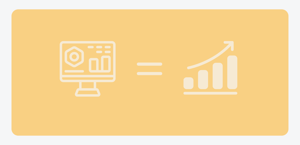
Smarter Incentives #1 - The Key To Winning More B2B Customer Loyalty
With the slew of challenges facing the B2B industry today - inflation, supply chain instability, rapidly evolving technology, and workplace environments - it’s no wonder that businesses are feeling increasing pressure to stay competitive and prevent customer churn.
When industry growth is slowed, companies can focus on capturing more market share from their competitors.
But those same companies can risk losing their own customers if they start to believe they’ll find greater success elsewhere -- a situation is becoming more common due to the growing disconnect between what B2B sellers offer and what today's buyers are expecting.
What Do B2B Buyers Want From Their Sellers?
Research shows that more B2B buyers say their expectations for the ideal customer have changed, and they’re more than willing to switch sellers to get what they need.
An increasing number of B2B buyers want to buy from sellers who understand their needs and provide them with solutions, whether that’s through competitive pricing, quick issue resolution, better product or service offerings, greater flexibility, high-quality customer service, and more.
More industries recognize the need for a personalized, customer-centric approach to selling, and the B2B industry is no different. B2B buyers today want sellers to know and remember their unique preferences; they want to be able to research and purchase how it suits them, interact with the brand on their preferred channels, and receive relevant offers.
When buyer trends show an inclination towards exploring options and embracing change, managers likewise need to adapt their customer retention and growth strategies.
What This Means For B2B Incentive Programs
As B2B customer retention and growth strategies evolve, the typical incentive programs in the industry must evolve along with them. These B2B programs - which are rule-based and supply incentives and rewards to motivate individuals like sales reps, distributors, or customers to participate - have been used for years to help supplement and build B2B business relationships.
The traditional format of the “do this, get that” incentive program model helped keep these rewards programs simple and reliable for the businesses that own them. However, over time, this reliability becomes a hindrance - too many brands simply maintain their current incentive programs year after year, without seeing a need to modify or grow them.
Modern B2B Businesses Need Smarter B2B Incentive Programs
The “do this, get that” mentality works up to a certain point. But in order to meet the expectations of modern B2B buyers and reap richer gains, incentive programs need to get smarter.
Smarter programs can utilize elements like first-party data and customer segmentation to provide buyers with more value, such as personalized experiences, highly relevant recommendations, and offers, or more helpful communications. Smarter B2B incentive and loyalty programs are more sustainable, achieve more goals, and show a higher return on investment.
Under challenging market conditions (like the ones mentioned at the beginning of the post), well-designed incentive programs help B2B brands form stronger, more mutually successful buyer-seller relationships built on more than just transactions. These programs allow brands to create emotional connections with their customers by supporting their personal and professional goals, which is key to winning B2B customer loyalty.
How To Get Started Making Smarter Incentive Programs
While the idea of redesigning or refreshing your current incentive or loyalty program might sound daunting, having a trusted partner with experience can help make the process even smoother. That's why we've launched our most recent whitepaper, The Business Case For Smarter Incentives. In it we explore the process for redesigning or refreshing B2B incentive programs: why brands need to do so, the common issues that get in the way, and most importantly, the steps brands can follow to make their program smarter from start to finish.
You can download the whitepaper today to get the full guide, including a checklist of definitive action items for program owners who are looking to improve their B2B incentive or loyalty program.
And the need for a smarter program might be more dire than you realize. In part 2 of our series, we'll explore how to know if your B2B incentive or loyalty program is under-performing, and the potential reasons why.
This blog is the first in our “Smarter Incentives” series, companion posts for our newly-released whitepaper "The Business Case For Smarter Series". The series explores the reasoning for why today's B2B incentive programs need to be redesigned to be smarter, and how program managers can refresh their programs to experience greater success and returns. You can download the full whitepaper for free here.



